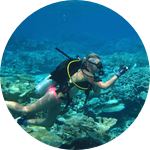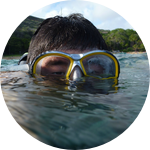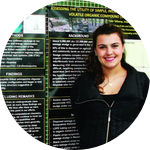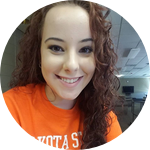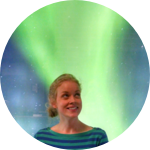Project Results
Hello gracious supporters,
It’s been an unforgivably long time since we last checked in with all of you and we’re quite embarrassed over that. I’m afraid scientific research is a pretty all-consuming enterprise, which chronically detracts us from other important life pursuits, like timely communications. Well, that’s the bad news.
The good news is that the DSU Pumpkin Team has been hard at work over the last year or so developing a suitable method of analysis for profiling the volatile chemicals emitted from sealed preserves that generate the distinct smell and taste sensations of the foods we eat, including decades-old homemade preserves prepared in rural South Dakota.
Recall the ultimate aim of our research was to use modern chemical and microbiological techniques to profile the chemical and biological composition of our much-celebrated preserved pumpkin that landed Moody County SD resident Mrs. Emma Youel a ceremonious second-place prize at the 1920 Moody County Fair (held in Flandreau, SD). However, before opening that only-of-its-kind irreplaceable jar of preserved pumpkin to test it, we first had to spend copious time and effort in the laboratory developing and refining an analytical method from scratch (much like the effort Mrs. Youel had to expend in developing her award-winning pumpkin preserve) and then demonstrating that the method worked effectively on a lot of similar preserved foods. And we spent late 2017 and all of 2018 doing just that (scientific research is a slow and often tedious pursuit).
To facilitate this work, Moody County Museum volunteer (and awesome human) Berdyene Bowen (with help from her wonderful family) permitted us to plunder her turn-of-the-twentieth century basement in search of old preserves (prepared by her mother during the period 1950-1953) on which we could test our newly developed method. After searching through some 150 jars of preserves, we found 31 that had remained perfectly sealed. We spent all of 2018 applying our newly developed method to profiling the volatile aroma chemicals released from these 31 preserves after nearly 70-years of storage. We then compared their aroma profiles to modern store-bought preserves analyzed with our method to see how these preserves differed in aroma composition.
To wrap up a much longer story (and a 2-year investigation), the novelty of this research earned us an invitation to submit a paper to a special issue of the international scientific journal Molecules by January 1, 2019. This was quite a thrill for all the students working on the project, as such invitations for undergraduate research to be published in a special journal issue is unheard of. We submitted the paper on that date and, after addressing the critical feedback provided by several anonymous expert reviewers in a revised manuscript, that paper was just accepted for publication and is attached here for everyone to see.
We’re very proud of this scholarly contribution and it now provides the validated analytical foundation necessary for us to apply this method (and other chemical/biological methods now under development in our lab) to profiling the chemical and biological constituents of the “THE PUMPKIN.” That work is ongoing and being expanded to include some additional chemical tests that will permit us to extract as much information as scientifically possible from this only-of-its-kind sample of preserved pumpkin. So, please stay tuned for more on this.
The Pumpkin Team thanks all our backers for making this novel research and the resulting student-authored paper possible. You can take great pride in knowing that your contributions have directly facilitated the creation of brand-new human knowledge. YES!
HUGE thanks again and we’ll be in touch with the next installment of this fascinating scientific/historical story as soon as possible!
Cheers!
DSU Pumpkin Team
Profiling Volatile Constituents of Homemade Preserved Foods Prepared in Early 1950s South Dakota (USA) Using Solid-Phase Microextraction (SPME) with Gas Chromatography–Mass Spectrometry (GC-MS) Determination
Lucas J. Leinen, Vaille A. Swenson, Hope L. Juntunen, Scott E. McKay 1, Samantha M. O’Hanlon, Patrick Videau, Michael O. Gaylor
About This Project
In early September of 1920, at a local fair in Flandreau SD, a jar of preserved pumpkin was awarded the auspicious title of Second in Show. Despite its delectable qualities, the jar was sealed, stored, and ultimately forgotten. It was later donated to the Moody County Historical Society Museum for public display. We believe this sample represents an unprecedented opportunity to study the microbiological and chemical environment of the pre-industrial Great Plains.
Ask the Scientists
Join The DiscussionWhat is the context of this research?
The preserved pumpkin represents multiple avenues of inquiry to learn more about those days of yore on the windswept Dakota plains, including fungal analysis, air quality analysis, and isotopic analysis. Chemical and isotopic analyses of the pumpkin and the air trapped in the vessel will provide insight into the prevailing environmental conditions of that simpler time, especially regarding the composition of the Great Plains atmosphere prior to heavy industrialization. Fungi can evolve very quickly, sometimes altering their genomes noticeably in months or years. Identifying, and possibly even growing, the fungi sealed within the jar of pumpkin allows us to examine what changes have occurred over the last century by comparing them to present-day fungi.
What is the significance of this project?
This is very likely to be the only project of its kind. It is quite rare that such a well-preserved jar of canned fruit is made available for scientific assessment. Though measures of food and air quality were certainly undertaken in the early 1900s, the instrumentation was crude and the analyses rudimentary. Using modern technologies, we will be able to obtain unprecedented data on chemical compositions of foodstuffs and the atmosphere before the Great Depression. Analysis of the fungal diversity, determined based on the DNA remaining in the jar, provides a valuable comparison to a time before heavily industrialized farming was commonplace. This preserved pumpkin represents a truly extraordinary and novel piece of historical conservation science.
What are the goals of the project?
We will analyze the fungal content of the pumpkin via DNA sequencing and laboratory cultivation. Additional investigations into the stable isotope composition of the preserved pumpkin will provide insights into the effects of cultivation, storage, and cooking of the food, as well as the soil conditions of the time. We will also characterize the nutritional composition of the preserved pumpkin relative to present-day Great Plains pumpkins. We will use gas chromatography-mass spectrometry (GC-MS) to create a chemical fingerprint of the sample. This will then be compared to GC-MS fingerprints of contemporary Great Plains air samples to assess how the fingerprint has changed over the intervening 96 years.
Budget
Your donations will directly fund the costs of items and services involved in the fungal and chemical assessments of the preserved pumpkin. Collection of air and pumpkin samples from the jar require a specially designed collection bag that must be handled in a specialized glove box with an inert atmosphere. This will ensure nothing from the surroundings contaminates the preserved sample. Small samples of the pumpkin will be sent to the University of California Davis Stable Isotope Facility for stable isotope testing. Analysis of the fungi requires kits for DNA extraction and amplification of the 18S rRNA genomic regions, so chosen because they are the most widely used nucleic acid sequences in fungal identification. Once amplified, the DNA will be sequenced using a high-throughput PacBio sequencer at the University of Washington core facility. Your cumulative donations will facilitate a truly novel study of a piece of American history!
Endorsed by
Meet the Team
Affiliates
Affiliates
Affiliates
Affiliates
Affiliates
Hope Juntunen
I was born and raised in the tiny farming town of Hayti, South Dakota (population 381), and I am a first generation junior General Beadle Honors Program Scholar pursuing a double major in Physical Science (with a concentration in Chemistry) and Biology for Information Systems at Dakota State University. I have marveled at and questioned the natural world since I was a young girl. As I got older, I found that the only way I could obtain truly satisfying answers to my endless questions about how the world worked was through the formal study of science. And the more I learned, the more questions I had. So, I eventually concluded that a career in science was probably the right path for me. I am now trying to take my passions for scientific understanding to new heights by pursuing a dual Honors degree program, and immersing myself as deeply as I can in highly interdisciplinary scientific research at DSU. To further prepare myself for a PhD program, I spent this past summer working as an REU scholar at the Center for Chemical Evolution at The Georgia Institute of Technology, where I worked on cutting edge problems in prebiotic and pharmaceutical chemistry. My REU experience was so stimulating and gratifying that Georgia Tech now tops my list of prospective PhD programs. I will also give my first research paper at an international conference next month when I present some of my work at the Society of Environmental Toxicology and Chemistry (SETAC) World Congress/Annual North America Meeting in Orlando, Florida.
Vaille Swenson
I was born and raised in the mountains of Colorado, and I am currently a third year student pursuing a BS degree in Biology for Information Systems at Dakota State University. To satisfy my fascination with microbial life, I pursued my scientific interests from a very young age. I actually read textbooks for enjoyment and I spent my first real paycheck on a microscope. My musical abilities also seemed to blossom right alongside my investigative interests and pursuits; I have since performed with a number of concert symphonies and bands playing the oboe, flute, harp, and english horn. I have also amassed three years of computer programming experience in multiple languages since coming to DSU. I feel like my unique combination of ingrained curiosity and education make make me uniquely prepared to tackle this exciting research project. It is my hope that the experience and positive results from this project will help me achieve my ultimate goal of undertaking graduate studies in marine biology or microbiology.
Katie Mackoy
At a young age, my father, a high school biology teacher, gave lectures to my siblings and me on all things scientific. Despite the rest of the kids’ rejection, he pressed on and instilled a love of science and desire to learn within me. Therefore, a pursuit of this field is a natural progression. In service of this goal, I am currently a freshman Biology major at Dakota State University. Though my exact direction in science remains to be decided, I hope to bring my experience and enthusiasm to this fascinating project and search for something entirely novel. When I’m not working in the microbiology lab, I press flowers, read short stories, and engage in massively multiple online role-playing games (MMORPGs). Maybe someday, I’ll actually get to taste the pumpkin!
Lucas Leinen
I was born and raised in South Dakota and I am a first generation senior majoring in Physical Science (with a concentration in Chemistry) at Dakota State University. I have been passionate about anything and everything relating to scientific discovery since I can remember. My academic studies at DSU are broadly focused in chemistry, and I consider myself super fortunate to be working on such extremely interdisciplinary scientific research projects that address important scientific questions at the frontiers of several fields, including environmental organic, analytical and prebiotic chemistry, and microbiology. After graduation, I plan to pursue a PhD in bioorganic chemistry. As I am also quite eager to expand my cultural horizons, I hope to complete my PhD studies in Europe, with German and Swiss programs topping my list of desired graduate study locales. I am ultimately motivated to bring my passions for scientific investigation to bear on the betterment of the human condition, likely through the synthesis and characterization of powerful new drug molecules for combating humanity’s most devastating diseases.
Patrick Videau
Originally from Rougemont, North Carolina, I received a BA in the biological sciences from Goucher College in 2007 and, after conducting virology research at Johns Hopkins University for a year, returned to school and completed a PhD in Microbiology at the University of Hawaii at Manoa in 2014. My doctoral work investigated the genetic underpinnings of cellular differentiation in the model filamentous cyanobacterium Anabaena sp. strain PCC 7120. As a postdoctoral fellow, I worked at Oregon State University where I developed Anabaena as a heterologous expression system to produce and study medically-relevant cyanobacterial natural products. In 2016, I assumed my new duties as an assistant professor in the College of Arts and Sciences at Dakota State University. My lab currently consists of two undergraduate students who investigate questions at the intersection of cyanobacterial physiology and metabolism, and environmental and natural products chemistry.
Michael Gaylor
I serve as the entire Chemistry program, and one half of the Physical Science program, here at Dakota State University, where I am solely responsible for delivery of the Chemistry curriculum. I also teach advanced courses in toxicology, ecotoxicology, biogeochemistry, marine science, astrobiology, astrochemistry and chemical evolution. I am Cofounder and research director for Mycobius, a biotech startup focused on antibiotic discovery in extreme toxic environments. My core research interests are broadly focused on the chemistry and ecotoxicology of anthropogenic chemicals in the environment, with special emphasis on environmental fate and effects of persistent, bioaccumulative and toxic chemicals. More recent efforts have focused on characterizing the microbial communities and associated natural product chemistries of harsh toxic environments and elucidating the biochemical pathways by which these organisms adapt to and thrive therein, with the practical intent of identifying secondary metabolites exhibiting antibiotic properties. Ever seeking to expand the bounds of scientific inquiry, my students and I are increasingly engaged in addressing significant problems at the forefront of astrobiology and chemical evolution.
Additional Information
The total fungal content will be assessed by high-throughput sequencing based on selective amplification of fungal DNA. This facilitates the identification of every fungal strain within the sample. We will also assess whether fungi produced specialized spores that helped them survive the preserving process by trying to revive them under controlled laboratory conditions.
Project Backers
- 113Backers
- 101%Funded
- $6,100Total Donations
- $53.51Average Donation
